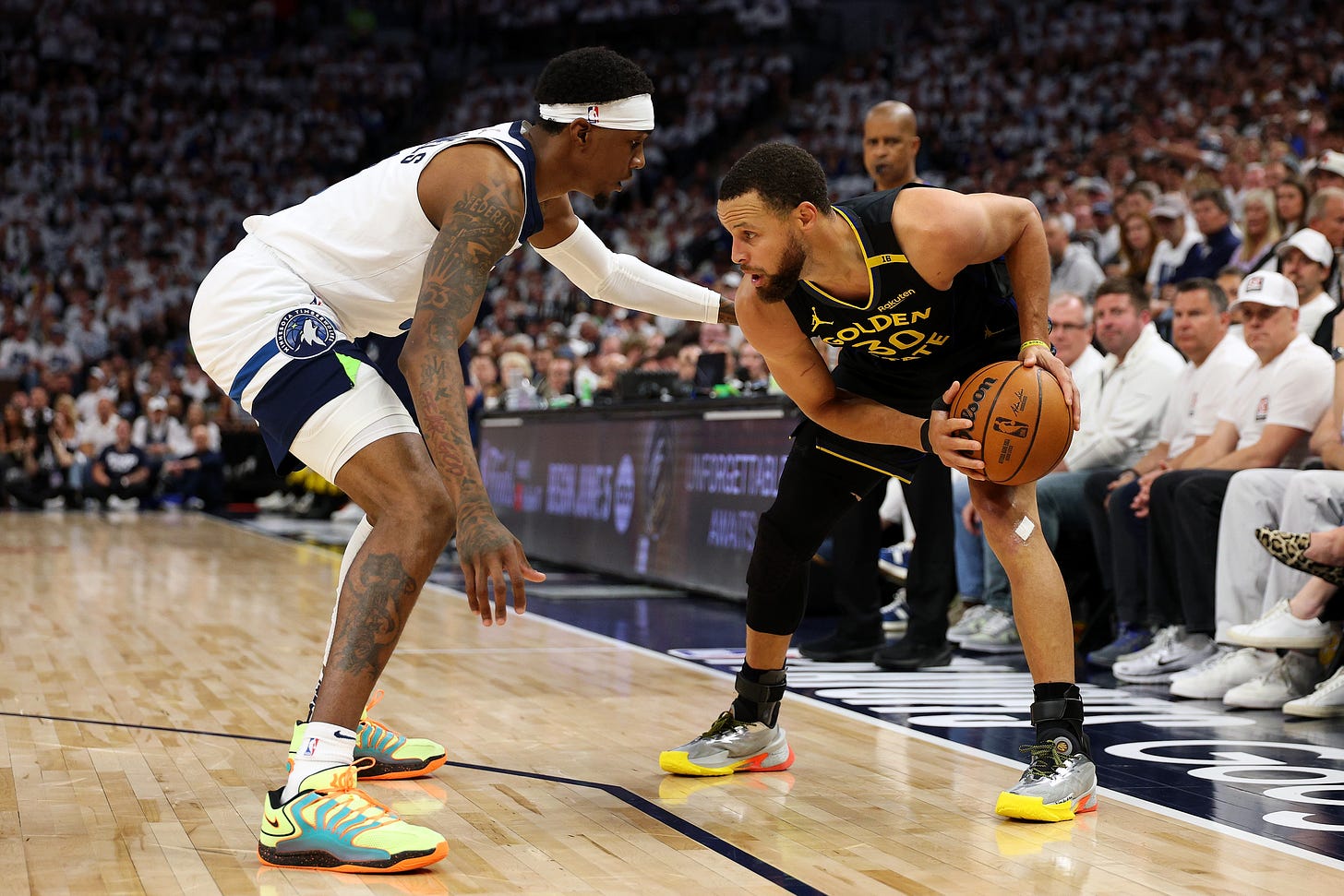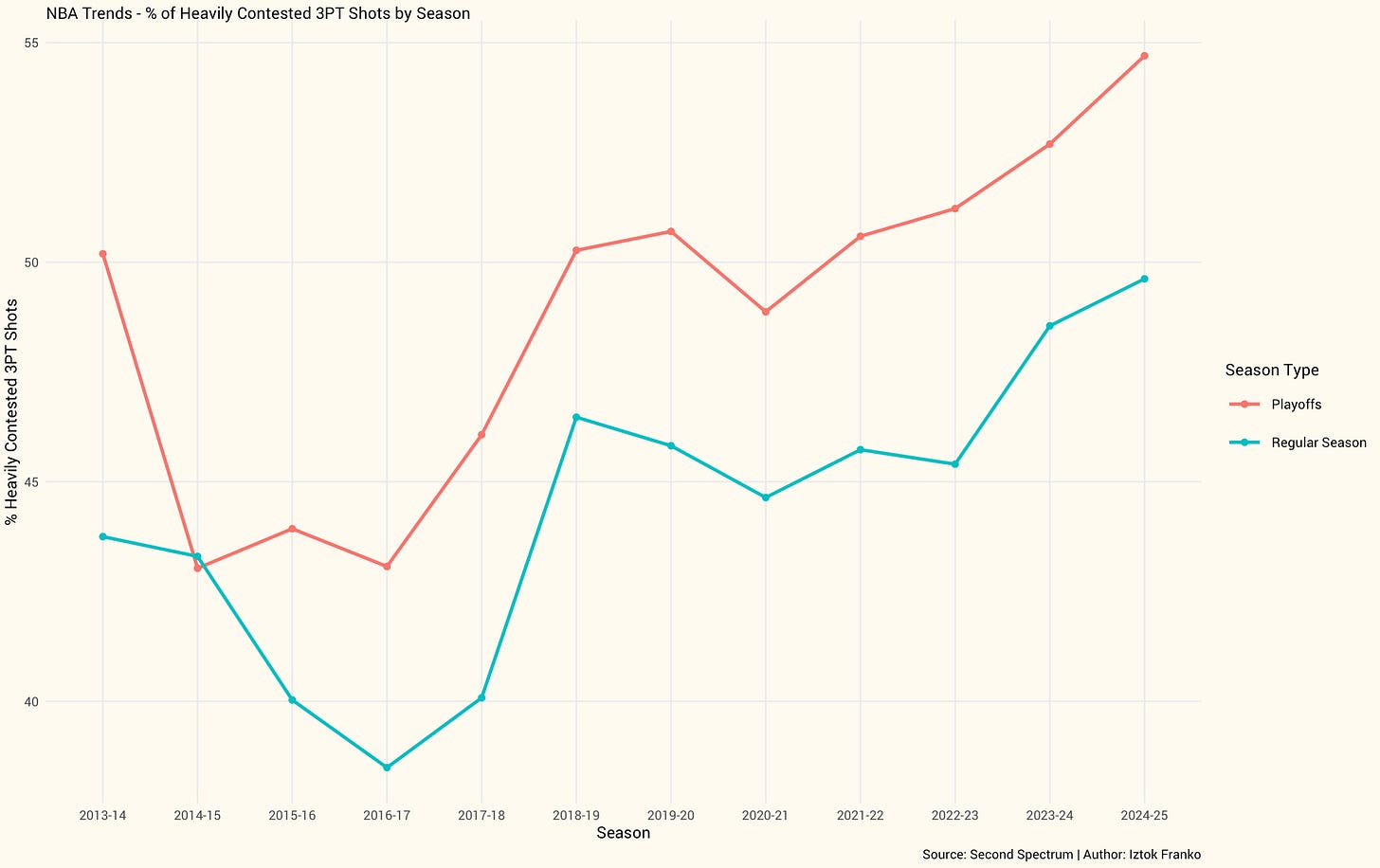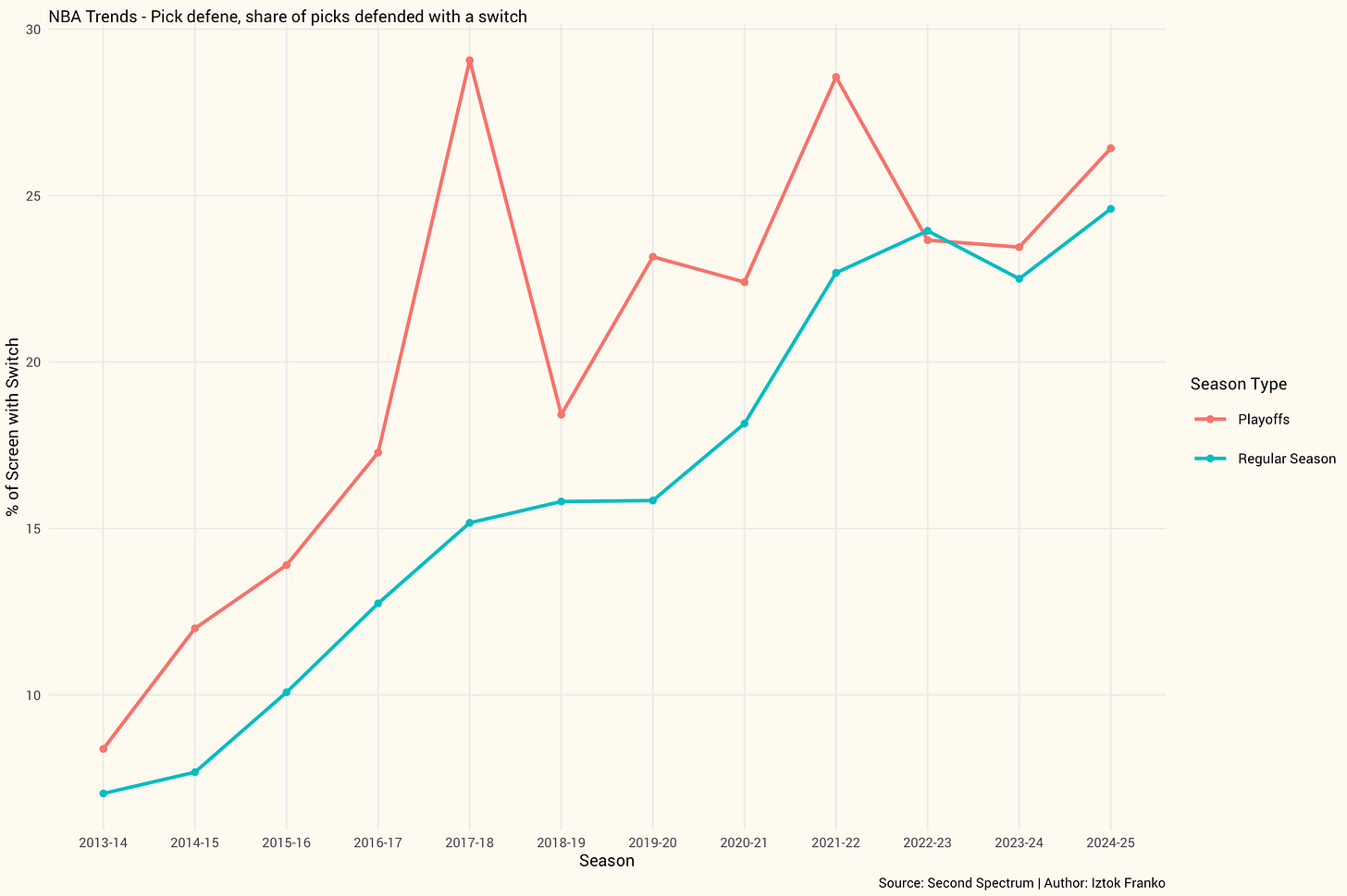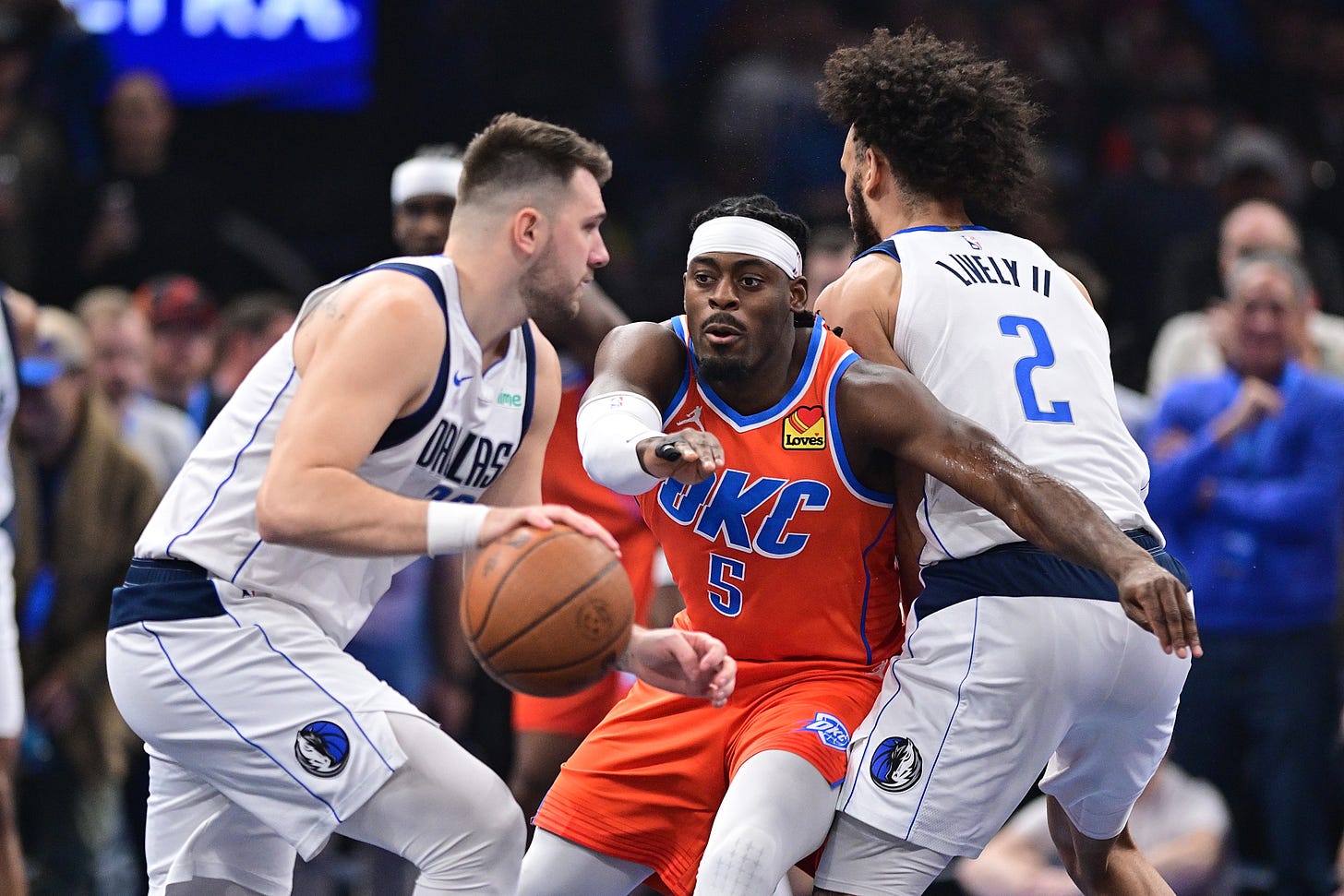NBA Trends, Part I: The New Era of Speed, Athleticism, and Aggressiveness
Evolving court geometry, rules, ball pressure, and the new paradigm
We’re officially into offseason mode here at digginbasketball.
That doesn’t mean I’m not still glued to every playoff game. Sure, there are no Lakers, no Mavericks, and no Luka games, which definitely sucks. But I also really enjoy this time of year, when there’s more space to watch, observe, and crunch numbers. It’s the perfect opportunity to zoom out and look at the bigger picture.
Content might come a bit less frequently in the offseason, but the goal is to make it more thoughtful and meaningful. First up: something I’ve been thinking about for a while now — how the NBA is changing. Some shifts are obvious on the surface, but are they part of a bigger trend? Is there data to support it? And as we watch playoff basketball, the most important question is whether these changes actually carry over when it matters most. As always, I’ll try to explore how these trends and shifts matter specifically for the Lakers and Mavericks and their looming team-building challenges.
Before I dig in (no pun intended), I’d love to hear from you. If you have your own observations, ideas, or things you’d like me to explore in future parts of this series, drop them in the comments or, even better, let’s open a chat and talk it through. For this series, I’ve parsed the last 20 years of game logs, more than 50,000 regular season and playoff records, including box score, advanced, and four factor data. I also went through the last 12 seasons of available tracking data. Some of you have mentioned wanting to learn more about data and analytics, and this is the perfect time of year to dive into it together.
Today’s highlights:
New, extended court geometry and spacing 📈
The need for faster, more versatile, and more athletic players 📈
The need for aggressive and physical players 📈
Adapting or falling behind? Are the Lakers and Mavericks built for it?
1 – New, extended court geometry and spacing 📈
I don’t need to spend too many words on how the rise in three-point volume has changed the game. This past regular season hit an all-time high in three-point attempts, with the Boston Celtics becoming the first team in NBA history to take more than half of their shots from beyond the arc. None of this is breaking news, but it’s worth highlighting again to help visualize the trend.
But three-point volume isn’t the only factor. The continued evolution of range is just as important, if not more, in redefining court geometry. Offenses are now pulling defenses well beyond 25 feet from the basket. For players like Steph Curry, Damian Lillard, Anfernee Simons, Luka Dončić, and even Jalen Green, the average screen is set more than 28 feet from the hoop. These are players who can pull up from anywhere, and that kind of deep spacing forces defenses to extend further than ever before.
Not only is there much more space for defenders to cover, but they also have to do it faster and more often than they did a decade ago.
The average pace has hovered between 99 and 100 possessions per game over the last few seasons. At the same time, the total distance covered in miles by NBA players has reached its highest point since Second Spectrum tracking data became available in the 2013–14 season.
2-The need for faster, more versatile, and more athletic players 📈
The idea that modern NBA defenses are worse or less demanding than those of past decades doesn’t hold up. The skill level and speed of today’s game are significantly higher, which makes defending much more challenging than it was in a slower, more condensed era. The rising share of heavily contested three-point shots is another sign of how much more defensive activity is required to keep up with today’s three-point-heavy offenses.
The increasing average pass distance on non-transition possessions, which reached 16.9 feet this season, is another indicator of how much more ground defenders have to cover. It is also another highest mark recorded in the tracking era.
That extended spacing, along with the rise in off-the-dribble shooting from deep, has also contributed to another major trend — the increased reliance on switching defenses.
Not only are switches becoming more frequent, but the types of switching are also getting more complex. Smart defensive teams like the Oklahoma City Thunder now use fast, versatile defenders to peel, veer, scram, or triple-switch across the floor, all in an effort to prevent mismatches and limit 4-on-3 or any kind of other advantage situations. Boston is another team that has been experimenting with all kinds of switching for years, leveraging their smart and agile defenders to stay connected and disrupt actions before they develop.
Most teams operate with a defensive shell designed to shrink the floor, collapse on drives, and show bodies against dominant scorers, then rotate — or in NBA terms, “fly around” — to contest shots on the perimeter. The Lakers were a clear example of that, and the Mavericks’ pack-line defense last season used similar principles to crowd Shai Gilgeous-Alexander and Anthony Edwards in the playoffs. Some teams, like the Wolves, apply the opposite approach — starting with a wider shell and collapsing late. Here’s J.J. Redick explaining the difference in approach.
Regardless of the scheme, what’s becoming more and more important in the context of changing court geometry and increasing pace is the need for long, athletic, and versatile defenders who can fly around, cover ground, and execute complex rotations all over the floor.
3-The need for aggressive and physical players 📈
Keep reading with a 7-day free trial
Subscribe to digginbasketball to keep reading this post and get 7 days of free access to the full post archives.














